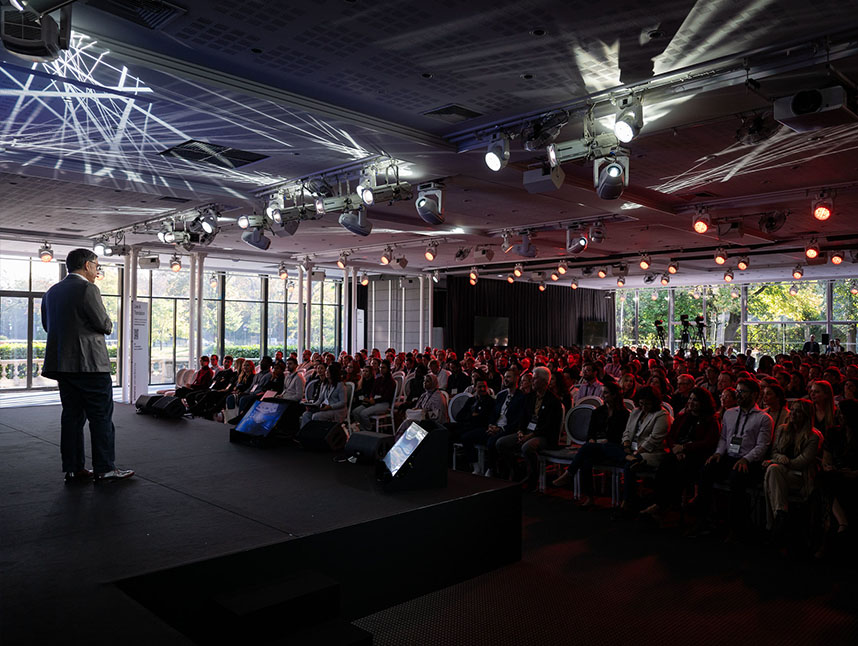The digital transformation of publishing houses: a way to secure the future
The publishing industry is facing one of the greatest challenges in its history. Demographic change and changes in media usage behavior are fueling the decline in print revenues, because older readers in particular are subscribers.
The publishing industry is facing one of the greatest challenges in its history. Demographic change and changing media usage patterns are fueling the decline in print revenues, because older readers in particular are subscribers. While increased production costs for print products and exploding delivery costs are making entire districts unprofitable. As a result, some newspapers recently stopped delivering print editions in some regions. In light of these developments, publishers must reposition themselves digitally to be successful and develop a strategy that supports their entire business model.
The Digital Presence: How Publishers Position Themselves in the Digital Space
The digital transformation requires a radical realignment of publishers' online presence. This is not just about porting content from the print world to digital, but understanding how to reach readers online. The basics here include:
Dynamic websites: Dynamic, user-friendly websites that adapt to different screen sizes and types are the foundation of digital presence. These websites should offer fast loading times and easy navigation.
Mobile apps: The use of mobile apps enables publishers to be closer to their readers. Here, personalized content, push notifications, and interactive elements can enhance the digital reading experience.
Social media: Social media is a key channel for distributing content and interacting with readers. Young readers in particular often use social media as their primary source of information. By sharing relevant and engaging content on platforms such as Twitter, Instagram and TikTok, publishers can get their news and articles directly into the newsfeeds of their target audiences. Publishers can have an active presence on social media and build an engaged community.
Content that works in digital
The digital world requires a completely new approach to content. Journalistic forms of presentation that work in print are often not as effective in digital. The performance of different forms of presentation in the digital space can vary widely, and there is no "one-size-fits-all" answer to what type of content performs best. Content choices depend on a variety of factors, including audience, topic, platform, and the publisher's strategic goals. Still, there are some general observations:
News and current affairs: Short news articles and current affairs are in demand because they convey up-to-date information quickly and concisely. This type of content is particularly well suited for social media and mobile apps, where readers often search for the latest news.
Reportages and features: Longer reportages and features can provide deeper analysis and background information on complex topics. They are well-suited to drive reader interest and engagement, especially when presented in an engaging way.
Interviews and opinion pieces: Interviews with experts, personalities or opinion pieces can be a valuable addition to editorial content. They make it possible to present different perspectives and engage the audience.
Local news: Local news is of great importance to many readers. Publishers can build a loyal readership by covering local events and developments.
Multimedia content: Images, videos, and interactive elements can increase the appeal of content and make complex information easier to understand. For example, video interviews or explainer videos can increase engagement.
Personalization: The ability to personalize content based on readers' interests and behavior increases relevance. However, this requires a sophisticated content management strategy and technological solutions.
Diversification of revenue sources
By diversifying their revenue portfolio, publishers are positioning themselves more broadly. This is an important building block, as the digital business model works differently from the traditional print business.
Digital subscriptions or the sale of individual articles offer one way of monetization. There are various models here. We present an overview of various paywall models here .
Classic ad placement also works in the digital world. So digital advertising remains an important source of revenue for us, but it requires a targeted strategy and personalized ads.
Digital reader engagement: More than just content - the art of interaction
Signing up for a digital subscription is not the end, but rather the beginning of a promising partnership between publishers and readers. To strengthen this bond, publishers are increasingly focusing on regular interactions. Instead of just delivering content, readers are brought into focus through targeted and personal communication.
A key element of this strategy is regular newsletters that go far beyond the simple transmission of information. Through attractively designed newsletters, readers not only receive the latest updates, but also experience the human aspect behind the brand. These digital messages not only provide a platform for exclusive content, but also for interaction. Readers can take part in surveys, express their opinions, and actively participate in discussions.
It's not just about sending information, but also about listening. Readers' comments and opinions are valued and actively incorporated into future content. This bidirectional communication creates a community atmosphere where readers feel heard and valued.
In the era of digital reader engagement, it's not just about delivering quality content, but also about building a vibrant and engaged community. Continuous, valuable interactions not only keep readers engaged, but also create a bond that goes beyond the purely transactional. Checkpoint Tagesspiegelis an example of how interaction and community building can be designed with a newsletter.
Understanding performance: the key to success in digital
It is important to note that successful digital strategies often rely on diversity. To meet different reader needs, it is advisable to offer a wide range of content. But which content is best received? Understanding the performance of different article types in digital is critical. Analyzing the performance of individual article types and continuously adapting the strategy is crucial to find out which content resonates best with the target audience and supports the publisher's strategic goals most effectively.
Change management and cultural change
Digital transformation requires cultural change and comprehensive change management. A clear strategic direction provides orientation for employees. Transparent communication about the measures and consequences, as well as the strategic alignment, involves all stakeholders. And finally, consistent implementation of the measures is essential for successful transformation. Here, publishers are called upon to be open to new ideas and technologies and to train and support their teams accordingly. This change affects not only the technical infrastructure, but also the way employees work and think.
This means that employees need to develop digital skills in order to work effectively in the digital world. Training and continuing education are essential.
With an open innovation culture, publishers show that innovation and experimentation are welcome. This also means giving employees the opportunity to make mistakes and learn from them.
The digital world never stands still. New technologies, trend and changing reader habits and interests - the circumstances are constantly changing. This requires a high degree of agility. Cross-functional teams and agile methods, such as Scrum, Lean Publishing offer publishers the flexibility and adaptability they need to respond to changing circumstances.
An outlook: The Digital Future of the Publishing World
Digital transformation is inevitable, but it is also an opportunity for publishers to reshape their business and move successfully into the future. Through an increased digital presence, diversification of revenue streams, and a cultural shift, publishers can pave the way to reach their readers in the digital era and put their business model on a solid digital foundation. Those who embrace these challenges will shape the future of publishing and succeed.






%201.svg)











